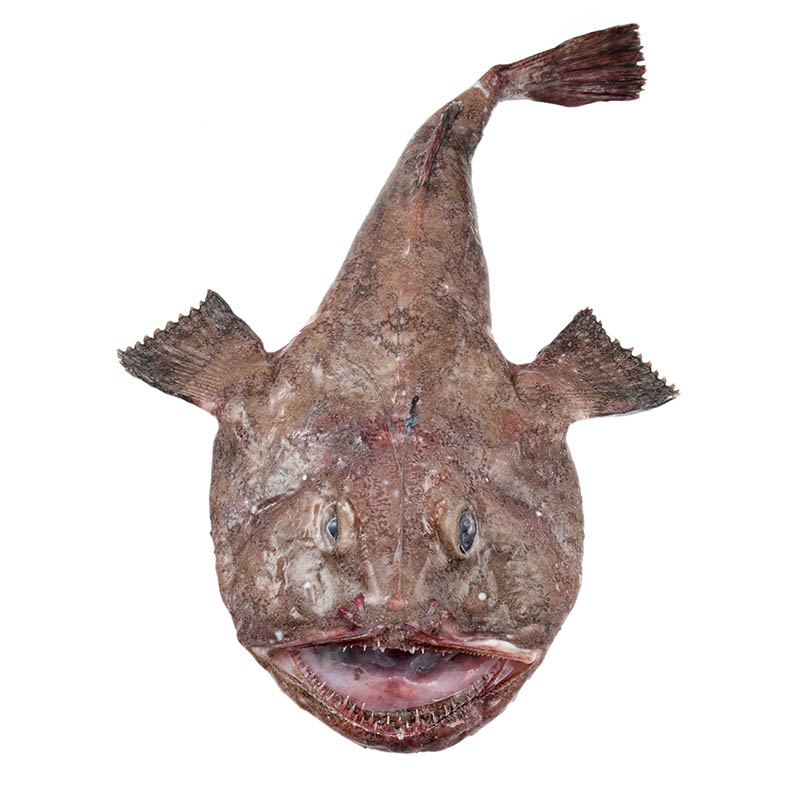Monkfish
Latin Name
Lophius americanus
Group Name
Groundfish
Habitat
Monkfish are bottom-dwelling fish native to the western Atlantic. They range from Newfoundland and Labrador in the north to Florida in the south. In Canada, monkfish are found primarily on the Grand Banks, in the Gulf of St. Lawrence, on the Scotian Shelf and in the Bay of Fundy. They can be found at depths ranging from just below the tide line to about 700 metres; though more typically at depths of less than 100 metres. Monkfish prefer to live on sandy or gravelly ocean bottoms.
Species Description
The Monkfish has a rounded body with a large, dorsally-compressed head bearing a very large mouth with a projecting lower jaw, and has a small tail. It has two small eyes on top of the head, and a movable "fishing rod" tipped with a leaflike flap of skin or 'lure', which it uses to attract prey. Their colour is dark olive-brown, with blackish edges on its pectoral and tail fins. On the underside, it is pinkish to dirty white in colour. Monkfish can grow to more than a metre in length and can weigh over 20 kilograms. Its life span reaches a maximum at 11 years. Monkfish females lay eggs in a 'veil', which is a clear, ribbon-like mucous sheet containing a million tiny, pink eggs. After a female sheds it, this sheet floats at the ocean's surface, and may be 6 to 12 metres long and between 0.15 to 1.5 metres wide. Floating egg veils and those falling out of captured females are seen annually by fish harvesters at sea in NAFO Divisions 3NO from June to July.
- Date modified:
